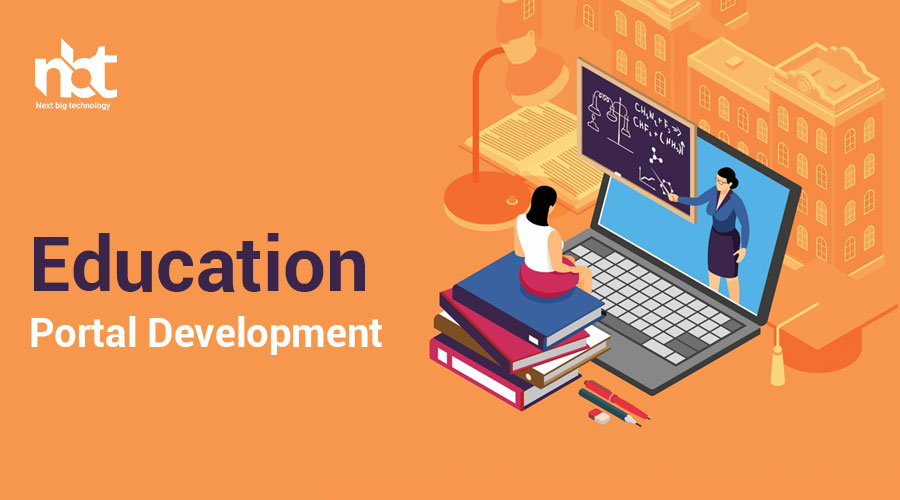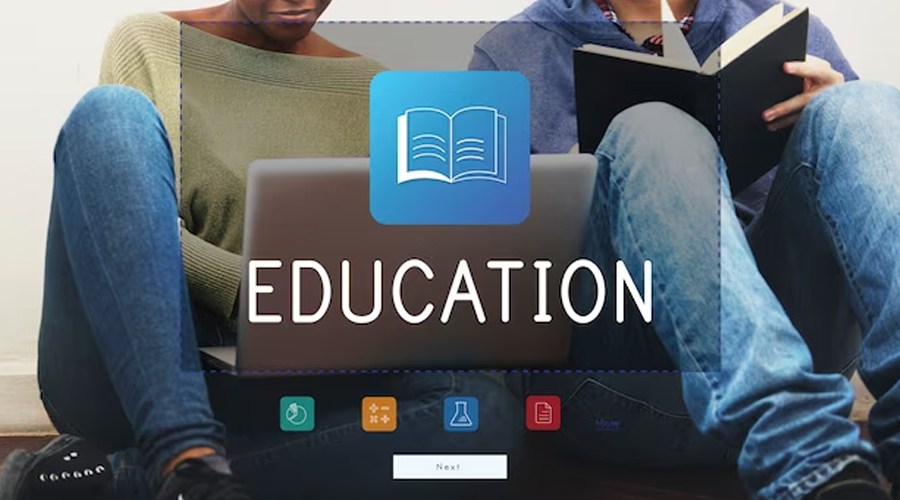Table of Contents
Education Portal Development Services
In today’s fast-paced digital world, the education sector is undergoing a significant transformation. With the advent of technology, traditional methods of teaching and learning are being revolutionized, paving the way for more interactive and engaging educational experiences. One such advancement is the development of education portals, which serve as virtual gateways to a world of knowledge and learning opportunities. These portals offer a wide range of services tailored to meet the diverse needs of students, educators, and institutions alike.
Education portal development services play a crucial role in creating customized online platforms that cater to the specific requirements of educational institutions, be it schools, colleges, or universities. These services encompass a wide array of features and functionalities designed to enhance the learning experience for users.
One of the primary benefits of education portal development services is the accessibility they offer. Through these portals, students can access learning materials, assignments, and resources from anywhere, at any time, using any internet-enabled device. This flexibility not only empowers students to learn at their own pace but also enables educators to reach a wider audience beyond the confines of the traditional classroom.
Furthermore, education portals facilitate seamless communication and collaboration among students, teachers, and administrators. Features such as discussion forums, messaging systems, and virtual classrooms foster a sense of community and engagement, enriching the learning experience for all stakeholders. Additionally, these portals often include tools for assessment and feedback, allowing educators to monitor student progress effectively and provide timely support and guidance.
Another significant aspect of education portal development services is their ability to personalize the learning journey for each student. Through data analytics and machine learning algorithms, these portals can track individual learning preferences, strengths, and areas for improvement, thereby offering tailored recommendations and resources to optimize learning outcomes. This personalized approach not only enhances student engagement but also contributes to higher retention rates and academic success.
From an institutional perspective, education portals serve as comprehensive management systems that streamline administrative tasks and enhance operational efficiency. These portals can automate processes such as student enrollment, course registration, and grading, freeing up valuable time and resources for educators to focus on delivering quality instruction. Moreover, they provide valuable insights and analytics that enable institutions to make data-driven decisions and continuously improve their educational offerings.
How to Create a Education Portal Development
In today’s fast-paced digital world, the demand for online education portals is skyrocketing. Whether you’re an educational institution, a corporate training entity, or an individual educator, having your own education portal can significantly enhance your reach and impact. But how do you create one? Here’s a comprehensive guide to help you navigate through the process of developing an education portal that’s both effective and engaging.
- Define Your Objectives: Before diving into the development process, clearly define the objectives of your education portal. Are you aiming to provide formal education, skill-based training, or a combination of both? Understanding your goals will shape the structure and content of your portal.
- Research Your Target Audience: Identify your target audience – students, professionals, hobbyists, or a specific demographic group. Understand their needs, preferences, and challenges to tailor your portal accordingly. Conduct surveys, interviews, or market research to gather valuable insights.
- Choose the Right Platform: Select a suitable platform for building your education portal. Options range from custom-built solutions to using existing Learning Management Systems (LMS) like Moodle, Canvas, or Blackboard. Consider factors such as scalability, customization options, and ease of use.
- Design User-friendly Interface: A user-friendly interface is crucial for engaging learners. Keep the navigation simple and intuitive. Organize content into logical categories and provide easy access to resources, courses, and interactive elements. Incorporate responsive design to ensure compatibility across devices.
- Create Compelling Content: Content is king in the world of online education. Develop high-quality, interactive learning materials including videos, presentations, quizzes, assignments, and discussion forums. Ensure that the content is informative, engaging, and aligned with your learning objectives.
- Implement Learning Management System (LMS) Features: Leverage the functionalities offered by LMS platforms to enhance the learning experience. Features such as course management, progress tracking, assessment tools, and communication channels are essential for effective learning delivery.
- Integrate Multimedia and Interactive Elements: Make learning dynamic and engaging by incorporating multimedia elements such as videos, animations, simulations, and gamified activities. Interactive features like quizzes, polls, and discussion forums promote active participation and knowledge retention.
- Ensure Scalability and Security: Anticipate future growth and ensure that your education portal is scalable to accommodate increasing user demands. Implement robust security measures to protect sensitive data and ensure privacy compliance, especially if handling student information.
- Enable Social Learning and Collaboration: Foster a sense of community among learners by integrating social learning features. Allow users to connect with peers, mentors, and instructors through chat, forums, and collaborative projects. Encourage knowledge sharing and peer-to-peer support.
- Continuously Evaluate and Improve: Regularly monitor user engagement, feedback, and performance metrics to identify areas for improvement. Use analytics tools to track learner progress, course effectiveness, and overall portal performance. Iterate on your design and content based on insights gathered.
Why Should You Go for Education Portal Development
In today’s fast-paced digital era, the importance of technology in education cannot be overstated. As traditional methods evolve, education portal development emerges as a key player in revolutionizing how knowledge is imparted and acquired. Whether you’re an educational institution, a corporate training provider, or an entrepreneur in the education sector, investing in an education portal can yield a multitude of benefits.
- Enhanced Accessibility: One of the primary advantages of education portal development is the ability to make learning accessible to a wider audience. With a well-designed portal, students can access educational materials anytime, anywhere, breaking down geographical barriers and accommodating diverse learning styles.
- Personalized Learning Experience: Education portals empower learners with personalized learning experiences tailored to their individual needs and preferences. Through features like adaptive learning algorithms and interactive modules, students can progress at their own pace, ensuring a deeper understanding of the subject matter.
- Scalability and Flexibility: Whether you’re catering to a handful of students or a global audience, education portals offer scalability and flexibility to accommodate varying levels of demand. As your user base grows, you can easily scale up your portal to meet increasing needs without compromising on performance or user experience.
- Cost-Effectiveness: Compared to traditional brick-and-mortar setups, education portal development can significantly reduce operational costs associated with infrastructure, maintenance, and resource management. By leveraging cloud-based technologies and automation, institutions can streamline their processes and allocate resources more efficiently.
- Rich Multimedia Content: Education portals provide a dynamic learning environment enriched with multimedia content such as videos, animations, simulations, and virtual labs. This multimedia approach not only enhances engagement but also facilitates better retention and comprehension of complex concepts.
- Real-Time Analytics and Tracking: With built-in analytics tools, educators gain valuable insights into student performance, engagement levels, and learning patterns in real time. By tracking progress and identifying areas for improvement, instructors can tailor their teaching strategies to address individual learning gaps effectively.
- Collaborative Learning Opportunities: Education portals foster collaboration and peer-to-peer interaction through discussion forums, group projects, and virtual classrooms. By facilitating collaborative learning experiences, students can enhance their communication skills, critical thinking abilities, and teamwork capabilities.
- Integration with Learning Management Systems (LMS): Education portals seamlessly integrate with existing learning management systems, allowing institutions to consolidate their educational resources and streamline administrative tasks. Whether it’s managing course enrollments, tracking student progress, or generating performance reports, LMS integration enhances efficiency and productivity.
Market Prospects of Education Portal Development
In today’s fast-paced digital era, the landscape of education is continuously evolving, with online learning gaining significant momentum. With the growing demand for flexible, accessible, and personalized education, the development of education portals has emerged as a promising avenue. These portals offer a comprehensive platform for learners to access a wide range of educational resources, courses, and tools conveniently from anywhere in the world. From students seeking supplemental learning to professionals looking to upskill, the market prospects for education portal development are brimming with opportunities.
Understanding the Market Dynamics:
The education sector is witnessing a paradigm shift towards digitalization, driven by factors such as technological advancements, changing learning preferences, and the need for continuous skill development. As a result, the demand for education portals is on the rise. Institutions, businesses, and individual educators are increasingly investing in the development of online learning platforms to cater to the diverse needs of learners across various age groups and disciplines.
Key Market Trends:
- Personalized Learning Experience: Education portals leverage advanced technologies like artificial intelligence (AI) and machine learning (ML) to offer personalized learning experiences. Through adaptive learning algorithms, these platforms can assess individual learning styles, preferences, and progress, thereby delivering tailor-made content and recommendations.
- Mobile Learning: With the proliferation of smartphones and tablets, there’s a growing preference for mobile learning solutions. Education portals optimized for mobile devices enable learners to access educational content on-the-go, facilitating seamless learning experiences anytime, anywhere.
- Collaborative Learning Features: Modern education portals incorporate collaborative features such as discussion forums, group projects, and live interactive sessions. These collaborative tools foster engagement, interaction, and knowledge sharing among learners, creating a vibrant learning community.
- Microlearning Modules: Short, bite-sized learning modules, known as microlearning, are gaining popularity due to their effectiveness in catering to short attention spans and busy schedules. Education portals are integrating microlearning modules to deliver concise yet impactful learning experiences that fit into learners’ hectic lifestyles.
Market Opportunities and Challenges:
The market for education portal development is teeming with opportunities, but it also presents certain challenges that need to be addressed:
- Global Reach: Education portals have the potential to reach learners worldwide, transcending geographical boundaries. However, catering to diverse cultural, linguistic, and regulatory requirements poses challenges in terms of content localization, compliance, and accessibility.
- Quality Content Curation: The success of an education portal hinges on the quality and relevance of its content. Curating high-quality educational materials, ensuring accuracy, currency, and credibility, requires substantial investment in content development and curation processes.
- Monetization Strategies: While there’s a growing demand for online education, monetizing education portals can be challenging. Identifying viable revenue streams, such as subscription models, freemium offerings, or partnerships with educational institutions, is crucial for sustainability and profitability.
- Technology Infrastructure: Building and maintaining a robust technology infrastructure to support the scalability, security, and performance of education portals is imperative. Investments in cloud computing, cybersecurity, and data analytics are essential to ensure seamless user experiences and data protection.
Essential Features of a Education Portal Development
In the digital age, education portals have become indispensable tools for facilitating learning and collaboration. These platforms serve as virtual gateways to a wealth of educational resources, offering students, educators, and administrators a centralized hub for accessing course materials, communicating, and managing academic activities. To ensure the success and effectiveness of an education portal, it is crucial to incorporate essential features that cater to the diverse needs of users. Let’s delve into some key features that are integral to the development of a robust education portal:
- User-Friendly Interface: A seamless and intuitive user interface is paramount for enhancing user experience. The portal should be easy to navigate, with clear categorization of content and intuitive menus. Additionally, it should be responsive across different devices, ensuring accessibility for users regardless of their preferred platform.
- Secure Authentication and Authorization: Security is of utmost importance when dealing with sensitive educational data. Implementing robust authentication mechanisms such as multi-factor authentication and role-based access control helps safeguard user accounts and confidential information from unauthorized access.
- Comprehensive Content Management System (CMS): An effective CMS empowers administrators and educators to effortlessly create, organize, and update educational content. It should support various formats including text, images, videos, and interactive multimedia elements, allowing for engaging and dynamic learning experiences.
- Collaboration Tools: Foster collaborative learning and communication among students and instructors through integrated tools such as discussion forums, chat rooms, and messaging systems. These features facilitate peer-to-peer interaction, group discussions, and real-time feedback, enriching the overall learning process.
- Assessment and Evaluation Tools: Incorporate tools for creating and administering quizzes, assignments, and assessments within the portal. Advanced features like automated grading, performance analytics, and progress tracking empower educators to monitor student performance effectively and tailor instruction accordingly.
- Personalization and Customization: Tailor the learning experience to individual preferences and requirements through personalized dashboards, content recommendations, and customizable learning paths. Adaptive learning algorithms can analyze user behavior and preferences to deliver relevant and engaging content personalized to each user’s needs.
- Integration with Learning Management Systems (LMS): Seamless integration with popular LMS platforms such as Moodle, Blackboard, or Canvas enhances interoperability and streamlines administrative tasks. This allows for seamless data exchange, course synchronization, and centralized management of student records and grades.
- Analytics and Reporting: Provide administrators and educators with actionable insights through comprehensive analytics and reporting tools. Track student engagement, performance metrics, and learning outcomes to identify areas for improvement and make data-driven decisions to enhance teaching and learning effectiveness.
- Mobile Accessibility: In today’s mobile-centric world, mobile accessibility is essential for ensuring anytime, anywhere access to educational resources. Develop mobile-responsive interfaces or dedicated mobile applications that enable users to engage with the portal on smartphones and tablets, fostering continuous learning beyond the confines of the classroom.
- Scalability and Performance Optimization: Design the portal infrastructure with scalability and performance optimization in mind to accommodate growing user bases and increasing demand. Utilize cloud-based solutions, caching mechanisms, and load balancing techniques to ensure reliable performance and seamless scalability as the platform evolves.
Advanced Features of a Education Portal Development
In today’s digital era, education portals have become indispensable tools for facilitating learning beyond the confines of traditional classrooms. With advancements in technology, these portals are continually evolving to offer more sophisticated features, catering to the diverse needs of students, educators, and administrators alike. Let’s delve into some of the advanced features that are revolutionizing education portal development and enhancing the overall learning experience.
- Personalized Learning Paths: One of the most significant advancements in education portal development is the ability to create personalized learning paths for individual students. Through data analytics and machine learning algorithms, these portals can assess each student’s strengths, weaknesses, and learning styles to tailor educational content and recommendations accordingly. This personalized approach fosters better engagement and retention, as students receive content that aligns with their specific needs and interests.
- Adaptive Assessments: Gone are the days of standardized tests that offer a one-size-fits-all approach to assessment. Advanced education portals now incorporate adaptive assessment techniques, where the difficulty level and type of questions dynamically adjust based on the student’s performance. This ensures a more accurate evaluation of each student’s knowledge and allows educators to identify areas requiring further attention or intervention.
- Interactive Multimedia Content: Education portals are moving beyond text-based materials to incorporate interactive multimedia content such as videos, simulations, and virtual reality experiences. These engaging resources not only capture students’ attention but also facilitate better comprehension and retention of complex concepts. Moreover, interactive content encourages active learning and allows students to explore topics at their own pace, enhancing their overall learning experience.
- Collaborative Learning Tools: Collaboration is a vital aspect of modern education, and advanced portals offer a range of collaborative learning tools to facilitate group projects, discussions, and peer-to-peer interactions. Features like discussion forums, live chat, and collaborative document editing enable students to collaborate effectively regardless of their geographical locations, fostering a sense of community and shared learning experiences.
- Real-Time Progress Tracking: Education portals provide real-time insights into students’ progress, allowing both students and educators to track performance metrics, monitor learning milestones, and identify areas for improvement. This data-driven approach enables timely interventions and personalized support, ensuring that students stay on track towards achieving their learning goals.
- Integration with Learning Management Systems (LMS): Many education portals seamlessly integrate with existing Learning Management Systems, providing a centralized platform for managing course materials, assignments, grades, and communication. This integration streamlines administrative tasks for educators while offering students a cohesive learning experience across various courses and modules.
- Accessibility and Inclusivity Features: Advanced education portals prioritize accessibility and inclusivity by incorporating features such as text-to-speech functionality, closed captioning, and customizable interfaces to accommodate diverse learning needs. By ensuring that educational resources are accessible to all students, regardless of their abilities or learning preferences, these portals promote equity and inclusivity in education.
- Gamification Elements: Gamification elements, such as badges, leaderboards, and rewards, are increasingly being integrated into education portals to motivate students and enhance their engagement with learning activities. By gamifying the learning experience, educators can incentivize desired behaviors, foster healthy competition, and make learning more enjoyable and immersive.
Education Portal Development Timelines
In today’s fast-paced digital world, education portals have become essential tools for facilitating learning, whether in traditional classrooms or remote settings. Developing an education portal requires meticulous planning and adherence to timelines to ensure successful implementation. In this guide, we’ll explore the key steps involved in education portal development and outline optimal timelines for each stage.
- Planning Phase (1-2 months): The first step in education portal development is defining objectives and requirements. This involves gathering input from stakeholders, including educators, administrators, and IT professionals, to determine the portal’s purpose, features, and target audience. Additionally, conducting market research to identify existing solutions and assess user needs is crucial. The planning phase typically takes 1 to 2 months, depending on the complexity of the project.
- Design and Prototyping (2-3 months): Once requirements are defined, the next phase involves designing the user interface (UI) and user experience (UX) of the portal. Designers create wireframes and prototypes to visualize the layout, navigation, and functionality of the portal. Feedback from stakeholders is gathered and incorporated into iterations of the design. This phase typically takes 2 to 3 months, including multiple rounds of revisions.
- Development (3-6 months): With the design finalized, development begins. This stage involves coding the backend infrastructure, databases, and frontend interfaces of the portal. Developers integrate features such as user authentication, content management systems, interactive tools, and analytics. Agile development methodologies are often employed to facilitate continuous improvement and responsiveness to changing requirements. The duration of the development phase can vary widely, ranging from 3 to 6 months depending on the scope and complexity of the portal.
- Testing and Quality Assurance (1-2 months): Testing is a critical phase to ensure the functionality, performance, and security of the education portal. Quality assurance (QA) engineers conduct various tests, including functional testing, usability testing, compatibility testing, and security testing. Bugs and issues are identified, documented, and resolved through iterative testing cycles. This phase typically takes 1 to 2 months, but may extend depending on the number and severity of issues encountered.
- Deployment and Launch (1 month): Once testing is complete and all issues are addressed, the education portal is ready for deployment. IT teams configure servers, databases, and other infrastructure components for production use. Data migration may be necessary to transfer existing content and user data to the new portal. A launch plan is developed to communicate the availability of the portal to users and provide training and support as needed. The deployment and launch phase typically takes 1 month, culminating in the official release of the portal to users.
- Post-Launch Support and Maintenance (Ongoing): After the portal is launched, ongoing support and maintenance are essential to ensure its continued operation and optimization. This includes monitoring performance, addressing user feedback, implementing updates and enhancements, and maintaining security measures. Regular backups and disaster recovery plans are established to mitigate risks and ensure data integrity. Post-launch support and maintenance are ongoing responsibilities that require dedicated resources and attention.
How Much Does It Cost to Build a Education Portal Development ?
In today’s digital age, the realm of education has transcended traditional boundaries, paving the way for innovative solutions like education portals. These platforms serve as virtual gateways to learning, offering a diverse range of resources, courses, and interactive features. However, for those considering venturing into the realm of education portal development, one burning question often arises: How much does it cost?
Understanding the intricacies of cost estimation for education portal development requires a holistic approach, taking into account various factors that influence the final figure. Let’s delve into the key components that contribute to the cost of building an education portal:
- Scope and Features: The first step in estimating costs involves defining the scope of your education portal. Determine the essential features such as user authentication, course management, content delivery, interactive quizzes, progress tracking, and discussion forums. The complexity and number of features will significantly impact development costs.
- Design and User Experience (UX/UI): A visually appealing and user-friendly interface is crucial for engaging learners. Investing in intuitive UX/UI design ensures seamless navigation and enhances the overall user experience. Costs for design elements, including layout, graphics, and responsive design for multiple devices, should be factored in.
- Development Platform: The choice of development platform—whether it’s custom development, open-source solutions like Moodle or Sakai, or utilizing a learning management system (LMS) like Canvas or Blackboard—greatly influences costs. Custom development offers flexibility but may incur higher expenses, while LMS solutions provide pre-built frameworks at a lower initial cost.
- Content Management System (CMS): A robust CMS is essential for managing and updating educational content efficiently. Costs associated with implementing and customizing a CMS, or integrating with existing systems, should be considered.
- Technology Stack: The selection of technologies and programming languages impacts development costs and scalability. Factors such as server hosting, database management, security features, and third-party integrations (e.g., payment gateways, analytics tools) contribute to the overall expenditure.
- Testing and Quality Assurance: Thorough testing and quality assurance are indispensable to ensure the functionality, performance, and security of the education portal. Budgeting for testing activities, including unit testing, integration testing, and user acceptance testing, is vital to deliver a bug-free platform.
- Maintenance and Support: Post-launch, ongoing maintenance and support are essential for addressing issues, updating features, and enhancing performance. Allocate resources for regular maintenance, software updates, and technical support to ensure the longevity and relevance of the education portal.
- Regulatory Compliance and Security: Compliance with regulatory standards such as GDPR, COPPA, and accessibility guidelines is non-negotiable in the education sector. Investing in robust security measures and data protection protocols safeguards sensitive information and maintains trust among users.
While estimating the cost of education portal development, it’s essential to consider both initial investment and long-term sustainability. Collaborating with experienced developers and leveraging cost-effective solutions can help optimize expenses without compromising quality.
How to Create a Education Portal Development – Team and Tech Stack
In today’s digital age, the demand for online education portals has surged dramatically. Whether it’s facilitating remote learning, offering specialized courses, or providing a platform for academic institutions, creating a successful education portal requires careful planning, a proficient team, and the right technological foundation. Let’s delve into the essential steps of assembling your team and selecting the appropriate tech stack for your education portal development.
Understanding Your Project Requirements:
Before diving into the technical aspects, it’s crucial to have a clear understanding of your project requirements. Define the purpose of your education portal, target audience, features needed, and scalability expectations. This will serve as a blueprint for your development process and guide your team in making informed decisions.
Assembling Your Team:
- Project Manager: A seasoned project manager will oversee the entire development process, ensuring timely delivery and effective communication between team members and stakeholders.
- Developers: Depending on your project’s scope and requirements, you’ll need front-end developers proficient in HTML, CSS, JavaScript, and possibly frameworks like React or Angular for building the user interface. Back-end developers skilled in languages like Python, Ruby, or Node.js will handle server-side logic and database management.
- UI/UX Designers: These professionals will focus on creating an intuitive and visually appealing user interface, enhancing the overall user experience of your education portal.
- Content Creators: Engaging and informative content is crucial for any education portal. Content creators, including writers, editors, and multimedia specialists, will develop and curate educational materials for your platform.
- Quality Assurance (QA) Team: A dedicated QA team will conduct thorough testing to identify and rectify any bugs or usability issues before the portal’s launch.
- Security Experts: Given the sensitive nature of educational data, cybersecurity specialists will implement robust security measures to safeguard user information and prevent unauthorized access.
Selecting the Right Tech Stack:
Choosing the appropriate technology stack is paramount for the success of your education portal. Here’s a breakdown of the key components:
- Front-End Technologies: Consider using modern front-end frameworks like React.js or Vue.js for building dynamic and responsive user interfaces. These frameworks offer extensive libraries and tools for efficient development.
- Back-End Technologies: Opt for scalable and reliable back-end technologies such as Node.js, Python (Django or Flask), or Ruby on Rails. These frameworks provide robust server-side architecture and support for database management.
- Database Management: Select a database management system (DBMS) that aligns with your project requirements. Popular choices include MySQL, PostgreSQL, MongoDB, or Firebase for real-time database updates.
- Cloud Services: Leverage cloud platforms like AWS, Google Cloud Platform, or Microsoft Azure for hosting your education portal. Cloud services offer scalability, reliability, and seamless integration with other third-party services.
- Security Measures: Implement SSL encryption, secure authentication protocols, and regular security audits to protect user data from potential threats and breaches.
- Content Management System (CMS): Integrate a robust CMS like WordPress or Drupal to streamline content creation, publishing, and management workflows.
Education Portal Development Process
In the digital age, education has transcended traditional boundaries, embracing the virtual realm through the development of education portals. These platforms serve as dynamic hubs, offering a plethora of resources and opportunities for learners and educators alike. Crafting an effective education portal requires meticulous planning, strategic implementation, and a keen understanding of user needs. Let’s delve into the step-by-step process of developing an education portal that fosters seamless learning experiences.
- Needs Assessment and Goal Setting: The journey begins with a comprehensive needs assessment, where developers collaborate with stakeholders to identify the objectives, target audience, and desired outcomes of the education portal. Understanding the unique requirements and challenges helps in setting clear goals that align with the overarching mission of the institution or organization.
- Content Planning and Curation: Content reigns supreme in any education portal. Through careful planning and curation, developers map out the types of content to be included, ranging from curriculum materials and multimedia resources to interactive modules and assessments. Prioritizing quality, relevance, and diversity ensures an enriching learning experience for users.
- User Experience (UX) Design: UX design plays a pivotal role in shaping the overall usability and accessibility of the education portal. Designers focus on creating intuitive interfaces, seamless navigation pathways, and responsive layouts that cater to diverse learning preferences and devices. User feedback and usability testing drive iterative refinements to enhance the user experience continually.
- Technology Selection and Development: Selecting the right technology stack is crucial for the robustness and scalability of the education portal. Developers leverage a mix of front-end and back-end technologies, such as HTML5, CSS, JavaScript for the interface, and frameworks like Django or Ruby on Rails for backend functionality. Integration of learning management systems (LMS), content management systems (CMS), and analytics tools further enhance the portal’s capabilities.
- Security and Data Privacy: Safeguarding sensitive information and ensuring data privacy are non-negotiable aspects of education portal development. Developers implement robust security protocols, encryption mechanisms, and access controls to protect user data from unauthorized access and cyber threats. Compliance with regulatory frameworks such as GDPR or COPPA is imperative to maintain trust and credibility.
- Testing and Quality Assurance: Thorough testing is essential to identify and rectify any bugs, glitches, or usability issues within the education portal. Quality assurance teams conduct rigorous testing across multiple devices, browsers, and user scenarios to ensure seamless functionality and optimal performance. User acceptance testing (UAT) involves soliciting feedback from end-users to validate the portal’s effectiveness.
- Launch and Deployment: With meticulous planning and preparation, the education portal is ready for launch. Deployment involves deploying the portal to production servers, configuring domain settings, and conducting final checks to ensure everything is in order. A well-defined launch strategy, including marketing campaigns and user training initiatives, maximizes visibility and adoption.
- Continuous Improvement and Iteration: Education is an evolving landscape, and the education portal must adapt to meet changing needs and technological advancements. Post-launch, developers monitor user engagement metrics, gather feedback, and prioritize feature enhancements through iterative updates and refinements. Continuous improvement fosters a culture of innovation and ensures the longevity of the education portal.
Next Big Technology – Your Trusted Education Portal Development Partner
In an era where technology is transforming every facet of our lives, education stands at the forefront of innovation. With the world becoming increasingly digital, traditional methods of learning are evolving into dynamic, interactive experiences. This paradigm shift calls for reliable partners who can harness the power of technology to create cutting-edge education portals. Among these partners, Next Big Technology emerges as a trusted ally, paving the way for the next generation of educational platforms.
Education portals serve as the gateway to a wealth of knowledge, offering students, educators, and institutions a centralized hub for learning resources, collaboration tools, and administrative functions. From online courses to virtual classrooms, these portals streamline the learning process, making education more accessible and engaging than ever before.
Why choose Next Big Technology as your development partner? The answer lies in their unwavering commitment to excellence, innovation, and customer satisfaction. With a proven track record of delivering high-quality solutions across diverse industries, Next Big Technology brings a wealth of experience and expertise to the table.
When it comes to education portal development, Next Big Technology goes above and beyond to understand the unique needs and goals of each client. Whether you’re a school looking to digitize your curriculum or a corporation seeking to upskill your workforce, they tailor their solutions to align with your specific requirements.
One of the key strengths of Next Big Technology lies in their multidisciplinary team of developers, designers, and strategists. By combining technical prowess with creative vision, they bring ideas to life in ways that exceed expectations. From intuitive user interfaces to robust backend systems, every aspect of their solutions is meticulously crafted to deliver a seamless user experience.
Moreover, Next Big Technology stays ahead of the curve when it comes to emerging technologies and trends. Whether it’s artificial intelligence, virtual reality, or blockchain, they leverage the latest innovations to enhance the functionality and effectiveness of education portals. By embracing innovation, they empower clients to stay competitive in a rapidly evolving landscape.
Collaborating with Next Big Technology means more than just building a website or app – it’s about forging a long-term partnership focused on mutual growth and success. Their dedication to client satisfaction is evident in their transparent communication, timely delivery, and ongoing support services. With Next Big Technology by your side, you can rest assured that your education portal is in capable hands.
Enterprise Education Portal Development
In today’s fast-paced corporate landscape, continuous learning and professional development have become paramount for both employees and organizations. Enterprise education portals have emerged as a powerful solution to facilitate this ongoing learning journey. These portals serve as centralized platforms where employees can access a diverse range of educational resources, courses, and tools tailored to their roles and career aspirations. In this article, we delve into the significance of enterprise education portal development, its key components, and how it contributes to organizational growth.
Understanding Enterprise Education Portals
Enterprise education portals are comprehensive online platforms designed to deliver learning content and resources to employees within an organization. These portals go beyond traditional learning management systems (LMS) by offering personalized learning experiences, curated content libraries, interactive modules, and collaboration features. By leveraging technology such as artificial intelligence and data analytics, these portals provide insights into learning patterns and preferences, enabling organizations to tailor content and recommendations for maximum impact.
Key Components of Enterprise Education Portals
- User-Friendly Interface: A well-designed user interface is essential for seamless navigation and engagement. Intuitive dashboards, search functionalities, and customizable profiles ensure that employees can easily access the resources they need.
- Content Management System (CMS): A robust CMS allows administrators to upload, organize, and update learning materials efficiently. Content can include e-books, videos, webinars, podcasts, and interactive simulations, catering to diverse learning styles.
- Personalization: Machine learning algorithms analyze user data to deliver personalized recommendations and learning paths. By understanding each employee’s skills, interests, and learning goals, the portal can suggest relevant courses and resources, fostering continuous growth and development.
- Collaboration Tools: Social learning features such as discussion forums, chat rooms, and peer-to-peer networking facilitate knowledge sharing and community building. Employees can collaborate on projects, share insights, and learn from each other’s experiences, creating a culture of continuous learning within the organization.
- Assessment and Feedback Mechanisms: Built-in assessment tools and quizzes allow employees to evaluate their progress and receive feedback on their performance. Real-time analytics provide administrators with insights into learning outcomes and areas for improvement, enabling them to optimize content and learning strategies accordingly.
Benefits of Enterprise Education Portals
- Improved Employee Performance: By providing easy access to relevant learning resources, enterprise education portals empower employees to acquire new skills and knowledge, enhancing their job performance and productivity.
- Talent Development and Retention: Investing in employee development demonstrates a commitment to their growth and career advancement. Enterprise education portals help attract top talent and retain valuable employees by offering opportunities for continuous learning and skill enhancement.
- Agile Adaptation to Industry Trends: In today’s rapidly evolving business landscape, organizations need to stay ahead of the curve. Enterprise education portals enable employees to stay updated on industry trends, emerging technologies, and best practices, ensuring the organization remains competitive and innovative.
- Cost-Efficiency: Compared to traditional training methods, enterprise education portals offer a cost-effective solution for delivering scalable and on-demand learning experiences. By reducing the need for travel, instructor-led training, and printed materials, organizations can save on training expenses while maximizing the impact of their learning initiatives.
Top Education Portal Development Companies
In today’s fast-paced digital era, education portals play a pivotal role in revolutionizing how individuals access knowledge and learning resources. These platforms serve as virtual gateways to a plethora of educational content, offering students, educators, and institutions convenient access to a wealth of information, courses, and interactive tools. With the increasing demand for online education solutions, the emergence of top-notch education portal development companies has become imperative. Let’s delve into some of the leading companies spearheading innovation in this domain:
-
-
Next Big Technology:
Next Big Technology is one of the top development companies for the high-quality development of mobile apps and web development services. They have having experienced in-house team of developers who provide top-notch development services according to the business requirements. NBT provides highly business-oriented services and implements all the latest and trending tools and technologies. They always work hard to deliver a top-notch solution at an affordable cost. They are having experience of more than 13 years and delivered lots of projects around the globe to businesses and clients.
NBT is highly focused on providing top-notch development solutions at a very affordable cost. By using their market experience and development experience, they are delivering proper solutions to clients and various industries for their custom requirements.
Location: India, USA, UK, Australia
Hourly Rate :< $25 per Hour
Employees: 50 – 249
Focus Area
- Mobile App Development
- App Designing (UI/UX)
- Software Development
- Web Development
- AR & VR Development
- Big Data & BI
- Cloud Computing Services
- DevOps
- E-commerce Development
Industries Focus
- Art, Entertainment & Music
- Business Services
- Consumer Products
- Designing
- Education
- Financial & Payments
- Gaming
- Government
- Healthcare & Medical
- Hospitality
- Information Technology
- Legal & Compliance
- Manufacturing
- Media
-
- Blackboard: As a global leader in educational technology, Blackboard has established itself as a prominent player in the realm of education portal development. Leveraging advanced learning management systems (LMS) and innovative tools, Blackboard empowers institutions to create engaging online learning environments. Its solutions encompass everything from course management to student engagement and analytics.
- Pearson: With a rich history of providing educational resources and services, Pearson has evolved into a leading provider of education portal solutions. By integrating digital learning platforms with rich multimedia content and assessment tools, Pearson enables institutions to deliver immersive learning experiences tailored to diverse learning styles and preferences.
- D2L (Desire2Learn): Recognized for its intuitive and user-friendly learning management systems, D2L specializes in creating dynamic education portals that foster collaboration and engagement. Through its Brightspace platform, D2L offers a comprehensive suite of features, including personalized learning pathways, video integration, and real-time analytics, empowering educators to optimize the learning experience.
- Canvas by Instructure: Renowned for its simplicity and versatility, Canvas by Instructure has emerged as a preferred choice for institutions seeking robust education portal solutions. With features like seamless integration with third-party tools, mobile compatibility, and intuitive course design interfaces, Canvas empowers educators to deliver dynamic and engaging online courses.
- Moodle: As an open-source learning platform, Moodle has garnered widespread acclaim for its flexibility and affordability. Catering to the needs of educational institutions of all sizes, Moodle offers a range of features, including customizable course formats, collaborative tools, and extensive plugin support, making it a popular choice for building bespoke education portals.
- SAP Litmos: Specializing in corporate learning solutions, SAP Litmos provides feature-rich education portal development services tailored to the needs of businesses and organizations. With its cloud-based learning management system, SAP Litmos enables companies to deliver personalized training programs, track learner progress, and drive employee engagement and productivity.
FAQs on Education Portal Development
Are you considering the development of an education portal but find yourself filled with questions? You’re not alone. Creating an online platform for educational purposes involves various considerations, from technical aspects to user experience. To guide you through this process, let’s delve into some frequently asked questions (FAQs) on education portal development.
- What exactly is an education portal? An education portal is a digital platform designed to facilitate learning and educational activities. It serves as a centralized hub where students, teachers, and administrators can access resources, collaborate, and engage in various learning activities.
- What are the key features of an education portal? Key features of an education portal typically include user authentication, course management, content management, discussion forums, assessment tools, progress tracking, and communication channels. These features ensure a comprehensive and interactive learning experience for users.
- How can an education portal benefit educational institutions? Education portals offer numerous benefits to educational institutions, including increased accessibility to resources, enhanced collaboration among students and teachers, streamlined administrative processes, personalized learning experiences, and improved student engagement and retention.
- What technologies are commonly used in education portal development? Common technologies used in education portal development include content management systems (CMS) like WordPress or Drupal, learning management systems (LMS) such as Moodle or Blackboard, programming languages like PHP, JavaScript, and frameworks like Angular or React for frontend development, and databases like MySQL or PostgreSQL.
- How can we ensure the security of an education portal? Ensuring the security of an education portal is paramount. Implementing measures such as SSL encryption, robust user authentication mechanisms, regular security audits, and keeping software up to date can help mitigate security risks and safeguard sensitive data.
- How can we make an education portal user-friendly? User experience (UX) is crucial for the success of an education portal. To make it user-friendly, consider intuitive navigation, responsive design for mobile compatibility, clear and concise content presentation, accessible features for users with disabilities, and gathering feedback from users for continuous improvement.
- How can we monetize an education portal? There are several monetization strategies for education portals, including subscription models for premium content or features, advertising partnerships, selling courses or educational materials, offering certifications or diplomas for a fee, and seeking sponsorship or grants from educational institutions or corporations.
- What are the ongoing maintenance requirements for an education portal? Ongoing maintenance for an education portal involves regular updates to content and software, monitoring performance and security, addressing user feedback, adding new features or improvements, and ensuring compatibility with evolving technologies and user needs.
- How long does it take to develop an education portal? The time required to develop an education portal depends on various factors such as the complexity of features, customization requirements, integration with existing systems, and the availability of resources. A typical timeline could range from a few months to a year or more.
- How much does it cost to develop an education portal? The cost of developing an education portal can vary widely depending on factors like scope, features, technology stack, development team rates, and any additional services required. It’s essential to carefully plan and budget for development, considering both initial and ongoing expenses.
Thanks for reading our post “Education Portal Development”. Please connect with us to learn more about the Education Portal.
























